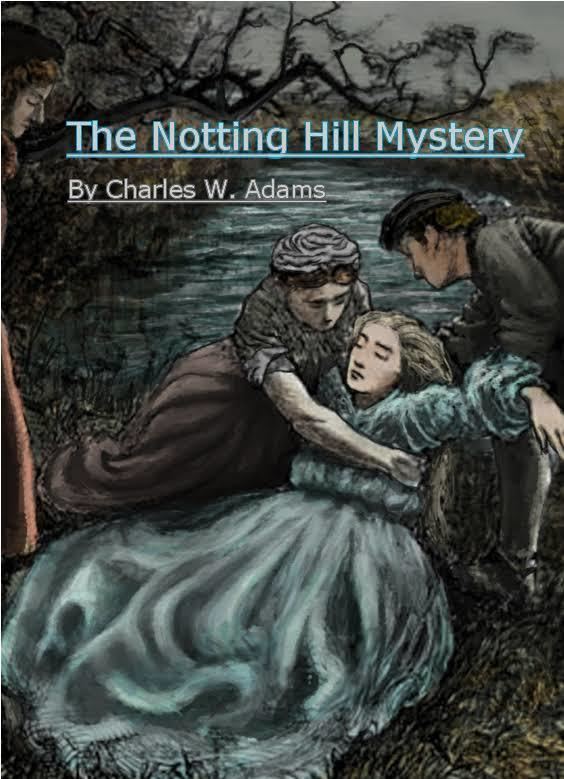8.4 /10 1 Votes8.4
5/5 The Telegraph Originally published 1862 Genre Detective fiction Country United Kingdom | 3.4/5 Goodreads Language English | |||||||||||||||||||||||||||||||||
 | ||||||||||||||||||||||||||||||||||
Publisher Bradbury & Evans (serial)Saunders, Otley, and Company (book) Publication date 1862–63 (serial)1865 (book) Similar George du Maurier books, Mystery books, Classical Studies books | ||||||||||||||||||||||||||||||||||
The notting hill mystery full audiobook by charles warren adams by crime mystery fiction
The Notting Hill Mystery (1862–63) is an English-language detective novel written under the pseudonym "Charles Felix", with illustrations by George du Maurier. The author's identity was never formally revealed in his lifetime, but several critics have since suggested Charles Warren Adams (1833–1903), a lawyer who wrote novels pseudonymously. It is arguably regarded as the very first detective novel in the English language.
Contents
- The notting hill mystery full audiobook by charles warren adams by crime mystery fiction
- History
- Plot
- Editions
- References
History
The Notting Hill Mystery was first published as an eight-part serial in Once A Week magazine beginning on 29 November 1862, then as a single-volume novel in 1865 by Saunders, Otley, and Company, with illustrations by George du Maurier (grandfather of Daphne du Maurier).
The editors of the magazine said the manuscript was submitted to them anonymously under the pseudonym of "Charles Felix". In 1952 William Buckler identified Charles Warren Adams (1833–1903) as the author of The Notting Hill Mystery and in January 2011, Paul Collins – a writer, editor and academic – writing in The New York Times Book Review, came to the same conclusion. Adams, a lawyer, was the sole proprietor of Saunders, Otley & Co., which published another book by "Charles Felix" called Velvet Lawn, and published an edition of The Notting Hill Mystery in 1865. Collins bases his theory on a number of lines of evidence, including an explicit reference to Felix's identity as Adams in a 14 May 1864 "Literary Gossip" column of The Manchester Times which read “It is understood that ‘Velvet Lawn,’ by Charles Felix, the new novel announced by Messrs. Saunders, Otley & Co., is by Mr. Charles Warren Adams, now the sole representative of that firm.”
A number of critics, including Julian Symons, a crime writer and poet, and Collins, believe it to be the first modern detective novel, but it has been overshadowed by works by Wilkie Collins and Émile Gaboriau who usually receive that accolade even though they came later. Some aspects of detective fiction can be found in R. D. Blackmore's sensation novel Clara Vaughan (written in 1853, published in 1864), about the daughter of a murder victim seeking her father's killer, but Adams's novel contains a number of innovative features, such as the main character presenting evidence as his own findings through diary entries, family letters, depositions, chemical analysts report, crime scene map. These techniques would not become common until the 1920s, and Symons said it "quite bowled me over" how far ahead of its time it was.
Plot
Source documents compiled by insurance investigator Ralph Henderson are used to build a case against Baron "R___", who is suspected of murdering his wife. The baron's wife died from drinking a bottle of acid, apparently while sleepwalking in her husband's private laboratory. Henderson's suspicions are raised when he learns that the baron recently had purchased five life insurance policies for his wife. As Henderson investigates the case, he discovers not one but three murders. The plot hinges on the dangers of mesmerism, a subject explored in fiction earlier by Isabella Frances Romer. Although the baron's guilt is clear to the reader even from the outset, how he did it remains a mystery. Eventually this is revealed, but how to catch him becomes the final challenge; he seems to have committed the perfect crime.
Editions
The novel was reprinted in 1945 by Pilot Press Ltd. of London in their anthology Novels of Mystery from the Victorian Age. In March 2011 the British Library made the novel available again via print-on-demand. It sold so many copies they were prompted to make a trade edition, produced using photographs of the 1865 edition, which was published in 2012 on the 150th anniversary of the novel's release. An ebook version is also available.
